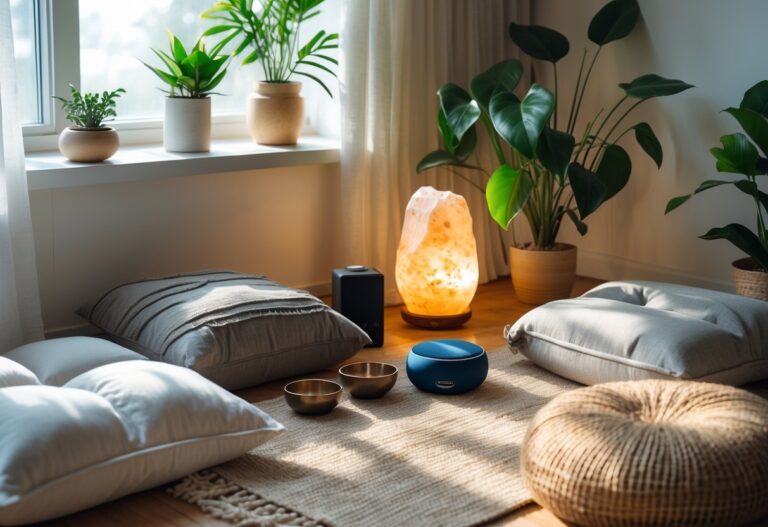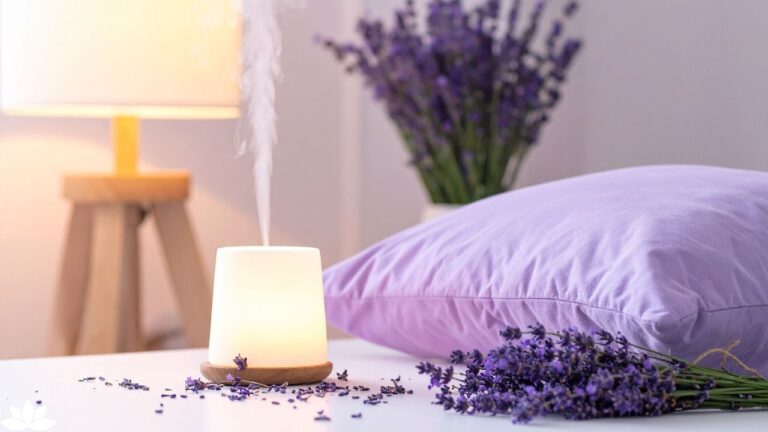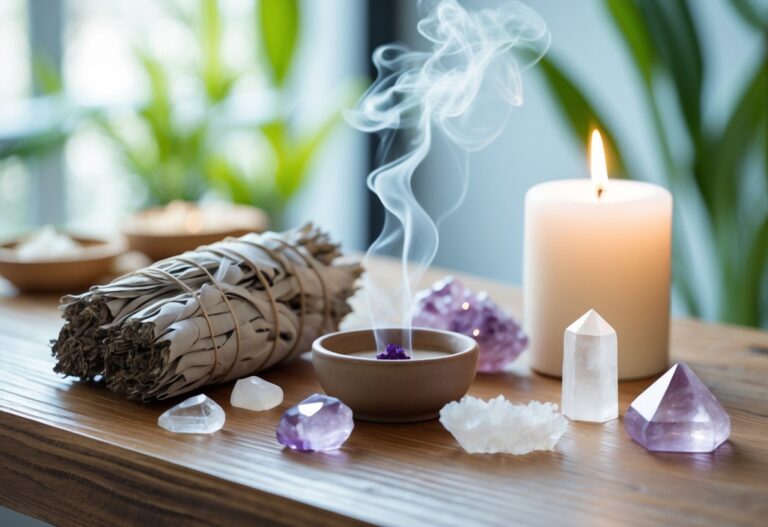Mandalas use sacred geometry—think circles, spirals, and repeating shapes—to bring a sense of balance and calm into your space. By weaving mandala designs into your home, you’re inviting relaxation, focus, and a bit of positive energy into your daily life.
These shapes are more than just pretty patterns. They act as visual cues, connecting your surroundings with a sense of harmony and, honestly, a bit of intention that’s sometimes hard to find in modern decor.
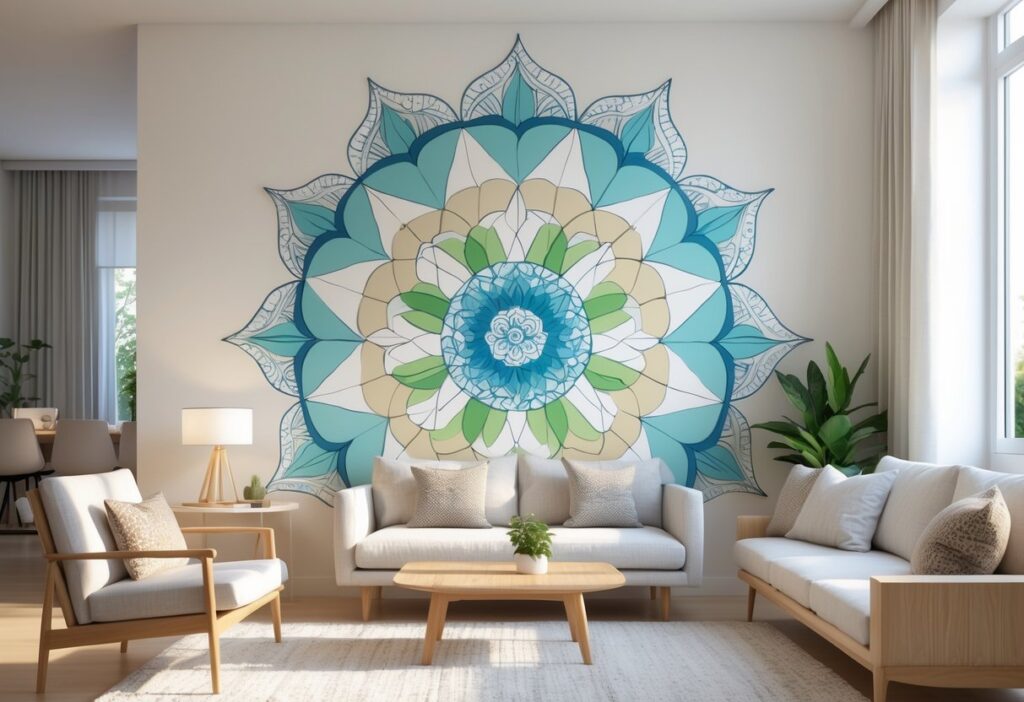
When you bring mandala art or patterns into your home, you’re tapping into symbols that have been cherished for centuries for healing and meditation. The geometric forms help guide energy flow, making your space feel grounded and, well, just a little more peaceful.
Maybe it’s a wall hanging. Maybe it’s a floor design. Either way, mandalas really do influence how you feel at home.
Using mandalas in your living space adds a layer of meaning to your decor. The choices become personal—they reflect your own goals for balance and well-being.
It’s an approach that invites you to live in a place where the physical and mental kind of meet in the middle, all thanks to this healing geometry.
The Healing Power and Sacred Geometry of Mandalas in Home Design
Mandalas offer a truly unique way to bring harmony and balance into your living space. Their circular shapes and intricate patterns use sacred geometry that can shift how you feel, think, and even interact with your home.
Understanding Mandalas and Sacred Circles
Mandalas are geometric shapes—usually circular—that represent wholeness and connection. The circle (sometimes called the sacred circle) is at the heart of mandala art, symbolizing unity and the cycle of life.
Including mandalas in your home design creates a visual focus that encourages calm and reflection. These shapes can help reduce stress by adding a sense of order and meaning to your environment.
Sacred circles in mandalas also link the material world with the spiritual. That connection supports mindfulness and a deeper sense of peace, which is always welcome.
Symbolism and Geometry in Mandala Art
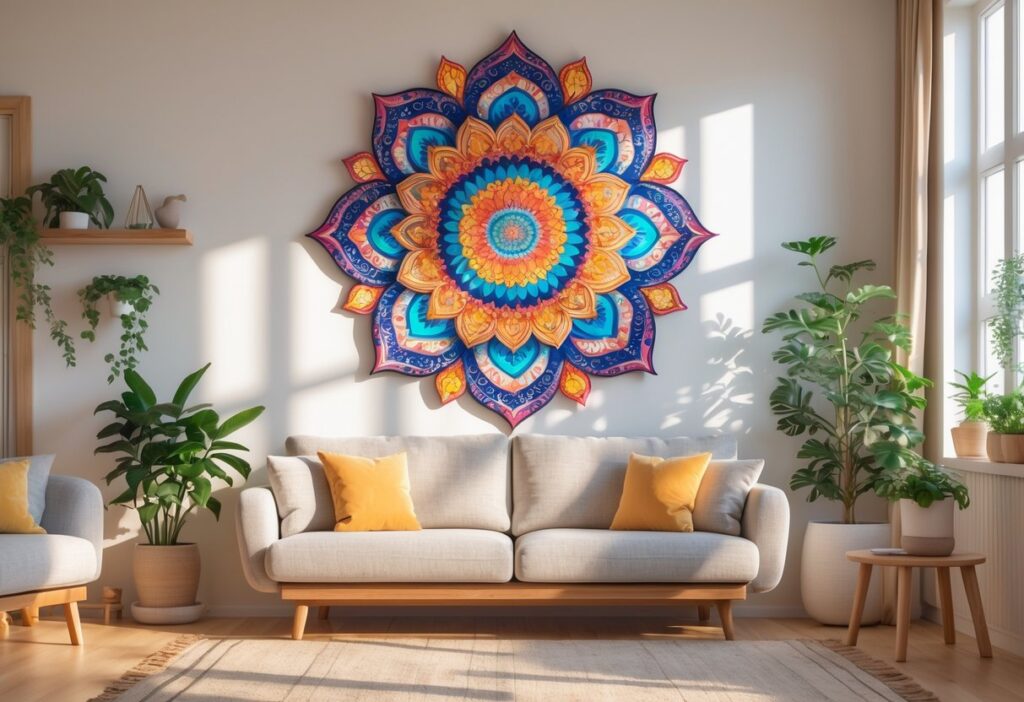
The design of a mandala uses repeated patterns and symmetry rooted in sacred geometry. Often, these patterns echo natural ratios you’ll see in flowers, shells, and other living things.
You’ll notice mandalas use lines and shapes—circles, triangles, squares. Each has its own symbolism. For example:
- Circles: Wholeness and unity
- Triangles: Balance and change
- Squares: Stability and foundation
Colors in mandalas matter too. They help express emotion and can gently nudge your mood in a more positive direction.
By using mandalas in your home, you’re tapping into this sacred geometry to create a space that feels balanced and nurturing—maybe even a little magical.
Cultural Roots: Hinduism, Buddhism, and Global Traditions
Mandalas have deep roots in spiritual traditions like Hinduism and Buddhism. In these religions, they serve as tools for meditation and spiritual guidance.
The Sanskrit word “mandala” actually means “circle,” highlighting its importance in sacred geometry. Mandalas often represent the cosmos or the universe’s structure, including the four directions: North, South, East, and West.
Plenty of cultures around the world use mandalas to connect with higher states of consciousness and healing energy. Bringing these designs into your home ties you to a long, rich history of spiritual art and symbolism.
Practical Applications of Mandalas for Healing Home Environments
You can use mandalas at home to create spaces that support healing and personal growth. Adding geometric patterns inspired by sacred shapes encourages calm and balance—something we could all use.
Incorporating Geometric Patterns and the Golden Ratio
You might try these patterns in:
- Wall art or murals
- Flooring tiles
- Furniture arrangements
The golden ratio creates visual appeal that just feels good to your brain. When you’re surrounded by these shapes, you might notice less stress and a bit more mental clarity.
Geometric designs can connect your space with the natural order of the world, encouraging a feeling of well-being that’s hard to fake.
Mandalas for Meditation, Art Therapy, and Personal Transformation
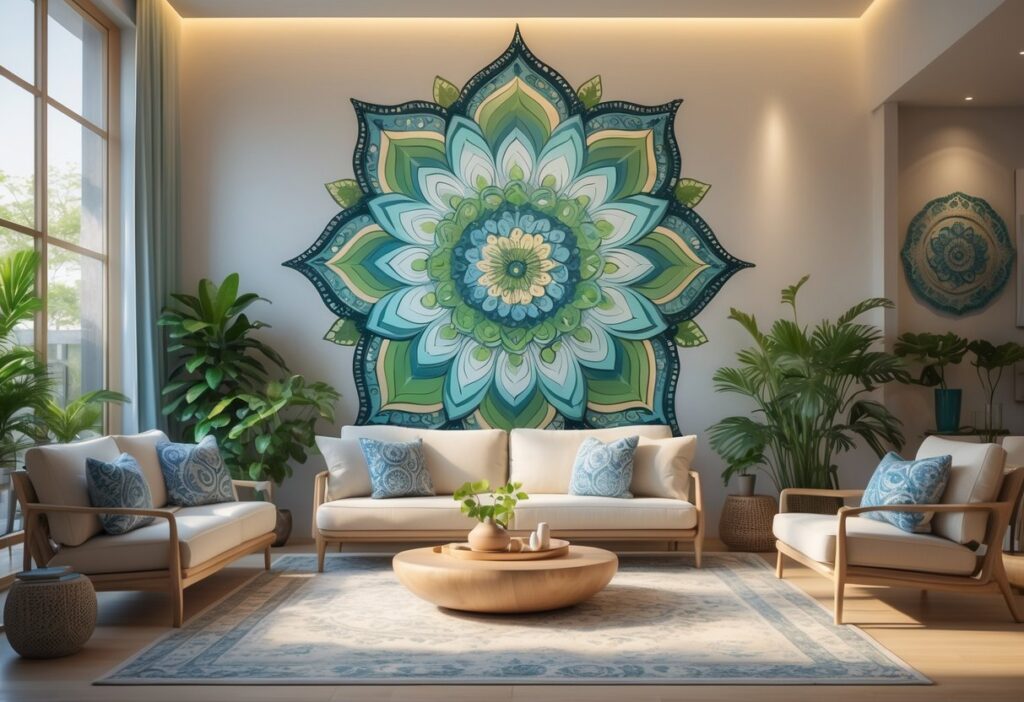
Geometric patterns in mandalas often follow the golden ratio—a special number that brings balance and harmony. Using these patterns in your home can make rooms feel more peaceful and, honestly, just right.
Using mandalas during meditation helps focus your mind. You can color or draw mandalas yourself, or just place them in a quiet spot for a little extra support when you need to relax.
In art therapy, creating mandalas lets you express complex feelings without having to find the right words. It’s a process that supports healing and self-awareness, and honestly, it can be surprisingly revealing.
Regular engagement with mandalas encourages transformation by guiding you inward. It helps bring unconscious thoughts to light and nudges you toward mental peace.
You can use mandalas to track personal growth or mark moments of calm in your daily life. Not a bad way to check in with yourself, right?
Design Ideas: Labyrinths, Labyrinth-Inspired Decor, and Everyday Artifacts
Labyrinths are these intriguing circular paths, almost meditative in nature. When you walk or even just trace them, it’s surprisingly easy to focus your mind.
Bringing that vibe into your home? Totally doable. Think labyrinth designs woven into rugs, draped across tapestries, or even carved into a winding garden path outside.
There are also smaller touches—labyrinth-inspired artifacts, for example. Coasters, trays, and ceramics with those mesmerizing circular mazes can sneak a bit of mindful energy into the most ordinary moments.
So, how do you actually add these things to your space? Here’s a quick rundown:
| Design Element | Application Examples |
|---|---|
| Labyrinth rugs | Entryways, meditation corners |
| Wall labyrinth art | Living rooms, calm zones |
| Ceramics and coasters | Kitchen, dining areas |
Honestly, weaving labyrinths into your surroundings can do wonders. They nudge you toward those rare, quiet moments of stillness and contemplation.
Maybe it sounds a bit mystical, but these designs really do help guide you toward a sense of calm, or at least a pause in your day. Who couldn’t use a little more of that?
In the end, whether you’re after a more mindful home or just enjoy the look, labyrinth-inspired decor brings a unique, thoughtful energy that’s hard to beat. Give it a try—it might surprise you.
Conclusion:
So, mandalas aren’t just beautiful patterns—they’re a way to bring intention, harmony, and a touch of ancient wisdom into your home. Whether you’re after more peace, a sense of balance, or just something that feels good to look at, these geometric designs offer a meaningful path. Maybe it’s time to let a little healing geometry into your space and see what shifts for you.

